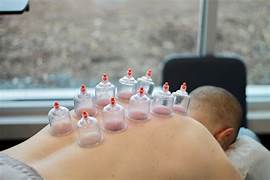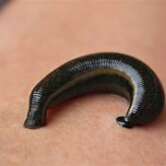Healing with Cupping Therapy: Benefits Beyond Relaxation

If you’ve ever noticed athletes with round red or purple marks on their backs, chances are they’ve experienced cupping therapy. While it may look unusual at first glance, this ancient practice has been used for centuries to promote healing and overall wellness.
Cupping therapy is often seen as a form of relaxation, but its benefits extend far beyond that. From relieving muscle pain to improving circulation and even supporting immunity, cupping has much more to offer than meets the eye. Let’s dive into its fascinating history, how it works, and why more people are embracing this natural therapy today.
The Ancient Roots of Cupping Therapy
Historical Origins Across Cultures
Cupping therapy isn’t a new trend—it dates back thousands of years. Ancient Egyptians used it as early as 1500 BCE, with records found in the famous Ebers Papyrus. Traditional Chinese medicine also embraced cupping as a way to balance energy or Qi in the body.
In the Middle East, the practice was part of prophetic medicine, commonly referred to as Hijama. Interestingly, cultures across Asia, Africa, and Europe also developed their own versions, proving that the idea of healing through suction is truly universal.
How the Practice Evolved Over Time
Originally, cupping was performed using horns, bamboo, or clay cups. Fire was used to create suction by heating the cup and then placing it on the skin. Today, practitioners often use glass or silicone cups with mechanical pumps, making the process safer and more controlled.
What’s fascinating is how cupping transitioned from an ancient tradition to a modern wellness trend. Its use in sports medicine, especially by Olympic athletes like Michael Phelps, helped bring it into mainstream awareness.
How Cupping Therapy Works
The Science Behind Suction and Blood Flow
At its core, cupping therapy works by creating negative pressure on the skin. When a cup is placed on the body, it draws blood to the surface, improving circulation and loosening tight muscles. This suction effect also stimulates the lymphatic system, helping the body clear out toxins and promote healing.
Some researchers suggest that the micro-trauma caused by cupping encourages the body’s natural repair response. In simple terms, those round marks aren’t just bruises—they’re signs of increased blood flow and the body’s effort to heal itself.
Types of Cupping: Dry, Wet, and Fire Cupping
There are several methods of cupping, each with unique benefits:
- Dry Cupping – Uses suction only, typically for relaxation, muscle relief, and improved circulation.
- Wet Cupping (Hijama) – Involves small incisions before suction to remove “stagnant” blood, believed to detoxify the body.
- Fire Cupping – Uses heat inside the cup to create suction, a traditional method still practiced in many cultures.
Each technique has its own purpose, but all aim to restore balance and relieve discomfort naturally.
Health Benefits of Cupping Therapy
Pain Relief and Muscle Recovery
One of the most well-known benefits of cupping is pain relief. Whether it’s chronic back pain, stiff shoulders, or sports injuries, cupping can ease muscle tension and promote faster recovery. That’s why athletes often turn to it as part of their recovery routine.
For everyday people, cupping can help with common issues like neck stiffness, lower back pain, or even tension headaches. By improving circulation in targeted areas, it reduces inflammation and soothes discomfort.
Stress Reduction and Improved Circulation
Cupping therapy doesn’t just target physical pain—it also helps the mind. The deep relaxation that comes with a cupping session can lower stress levels and promote better sleep. Think of it as hitting the reset button for both body and mind.
Improved circulation also means that oxygen and nutrients are delivered more efficiently throughout the body. This not only enhances energy levels but also supports overall wellness.
Boosting Immunity and Detoxification
Another fascinating benefit is its role in boosting immunity. By stimulating the lymphatic system, cupping helps the body eliminate waste and toxins more effectively. Some people even report fewer colds and quicker recovery when they include cupping in their wellness routine.
Traditional practitioners also believe that cupping helps balance the body’s internal systems, making it more resilient against illness. While more research is needed, many users swear by its immune-boosting effects.
Cupping Therapy vs. Modern Treatments
Comparing Cupping with Massage and Acupuncture
Cupping is often compared with other holistic practices like massage or acupuncture. While massage focuses on applying pressure, cupping works through suction. This difference allows cupping to reach deeper tissues, often providing longer-lasting relief.
Acupuncture, on the other hand, stimulates specific points to balance energy flow. Interestingly, some practitioners combine acupuncture with cupping for enhanced results. Together, they can target both physical and energetic imbalances in the body.
Integrating Traditional and Modern Healing Approaches
What’s exciting is how cupping therapy is now being integrated into modern wellness practices. Many physical therapists, chiropractors, and acupuncturists include cupping in their treatments. By blending ancient wisdom with modern science, patients can enjoy the best of both worlds—natural healing backed by professional care.
The Future of Cupping in Wellness and Healthcare
Growing Popularity in Sports and Holistic Medicine
Cupping has moved beyond traditional clinics and into gyms, spas, and wellness centers. Athletes use it to speed up recovery, while wellness enthusiasts embrace it for relaxation and detoxification. Its visibility in sports medicine has helped shift it from “alternative therapy” to a respected complementary treatment.
With more research being conducted, the medical community is also starting to take interest. Early studies suggest potential benefits for conditions like arthritis, migraines, and even anxiety.
What to Consider Before Trying Cupping
While cupping is generally safe, it’s important to consult a trained practitioner. Some people may experience mild soreness or skin discoloration, but these effects usually fade within a few days.
It’s also wise to inform your practitioner about any medical conditions you have. Pregnant women, people with blood disorders, or those taking blood thinners should approach cupping with caution.
Conclusion
Cupping therapy is more than just an ancient wellness ritual—it’s a powerful tool for healing that extends far beyond relaxation. From pain relief and muscle recovery to stress reduction and improved immunity, its benefits are both physical and emotional.
As it continues to gain recognition in sports, holistic medicine, and even modern healthcare, cupping stands as a reminder that ancient practices still have a place in today’s fast-paced world. If you’re looking for natural relief and a way to reconnect with your body, cupping therapy may just be worth exploring.

Frequently Asked Questions (FAQ)
Q1. What is cupping therapy used for?
Cupping is used to relieve pain, improve circulation, reduce stress, and support overall wellness.
Q2. Does cupping therapy hurt?
It’s usually not painful, though you may feel a pulling sensation. The round marks left behind may look dramatic but typically don’t hurt.
Q3. How long do cupping marks last?
They usually fade within 3–7 days, depending on your skin and circulation.
Q4. Can anyone try cupping therapy?
Most people can, but those who are pregnant, on blood thinners, or with certain health conditions should consult a doctor first.
Q5. How often should I do cupping therapy?
It depends on your needs—some people benefit from weekly sessions, while others use it occasionally for pain or stress relief.




